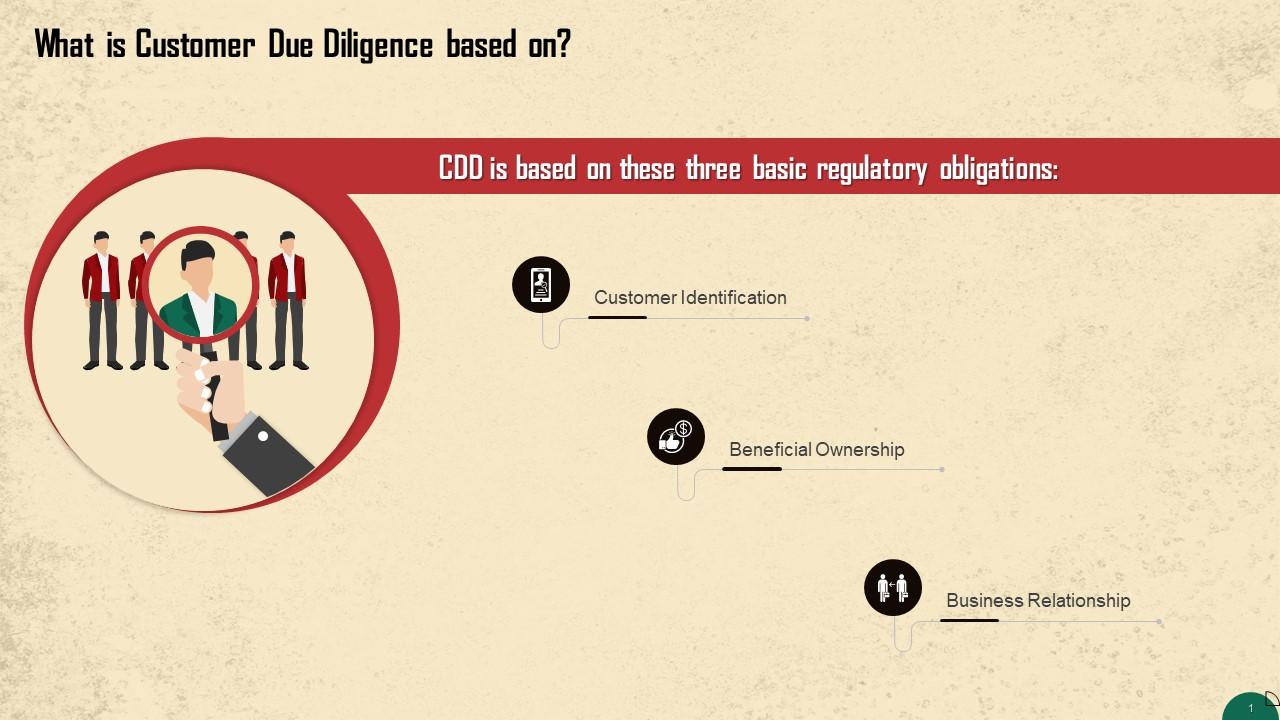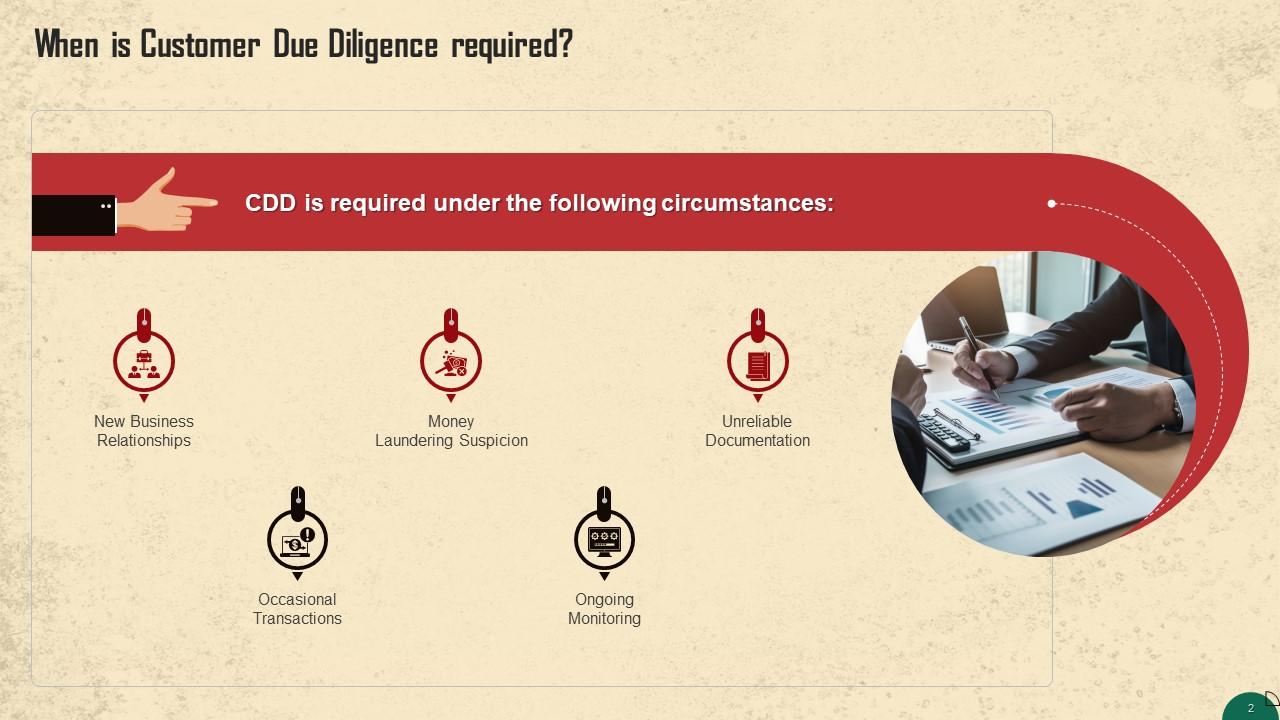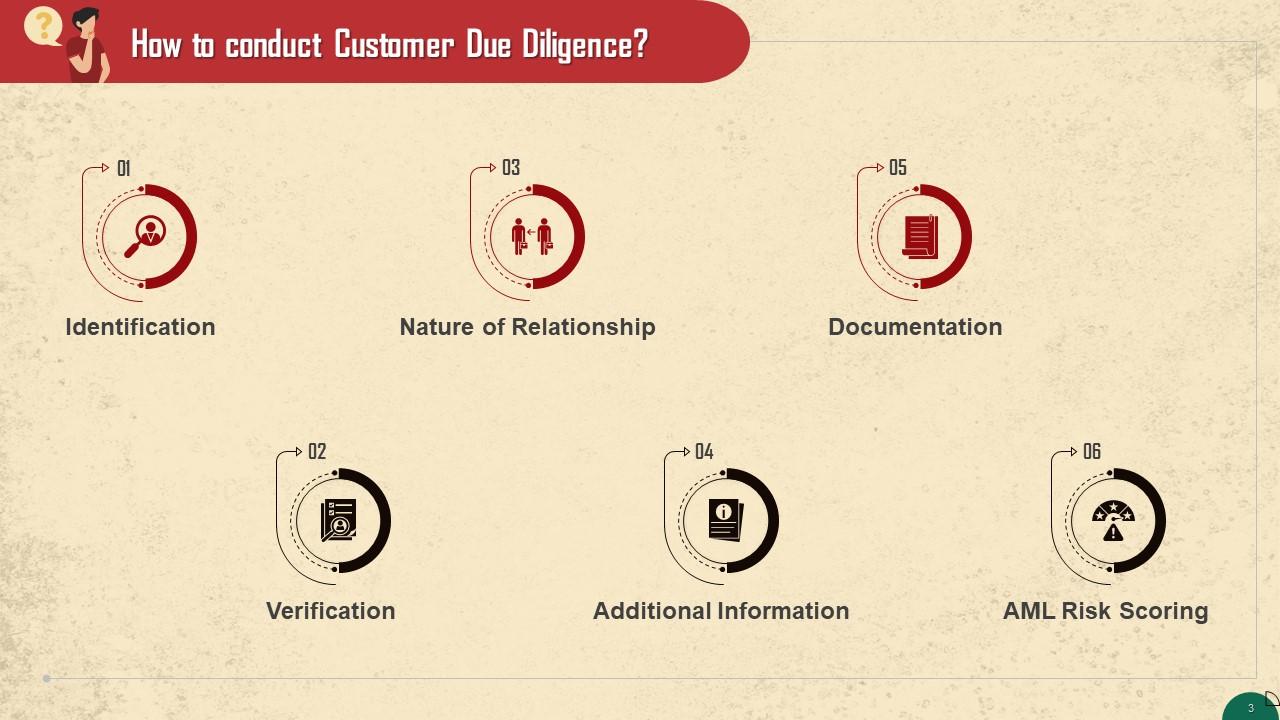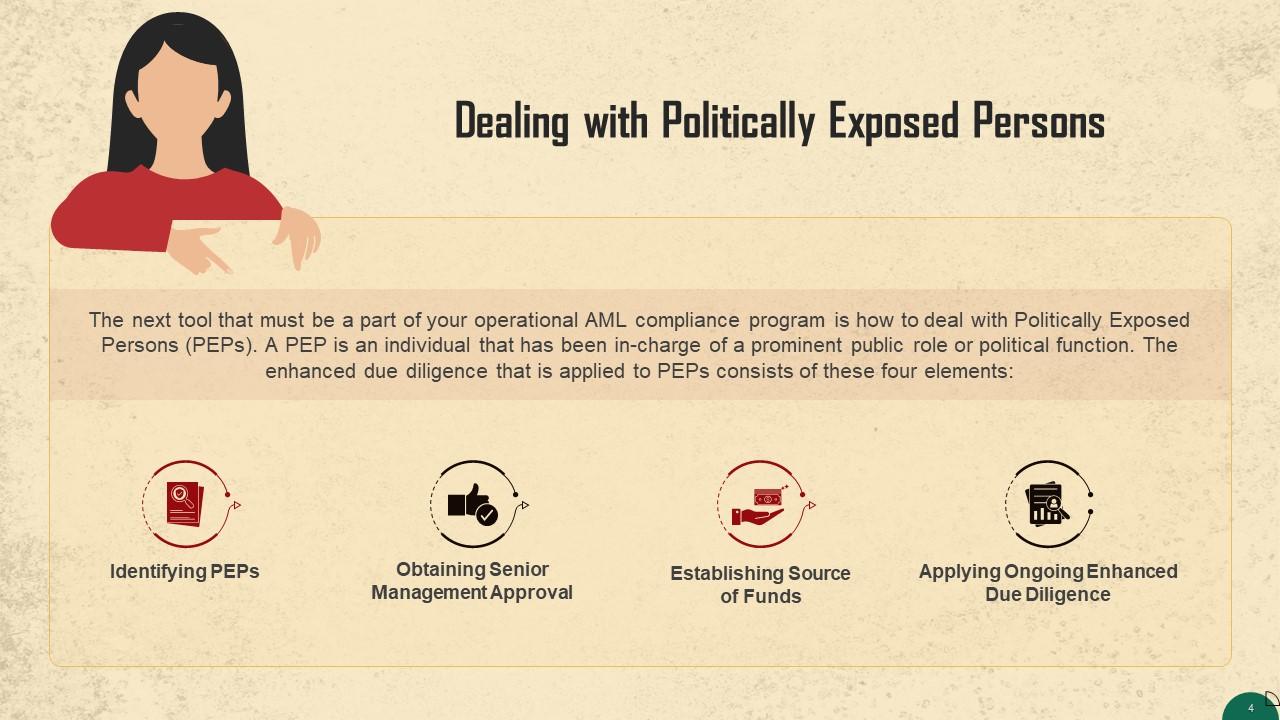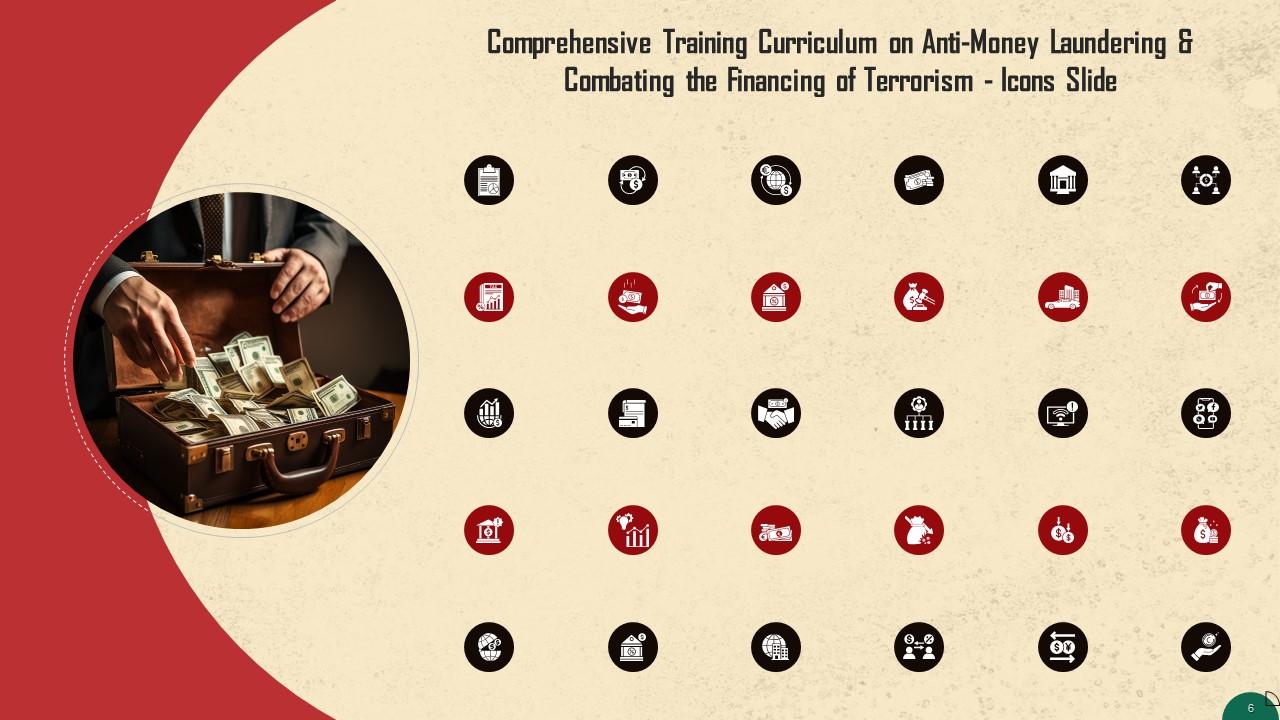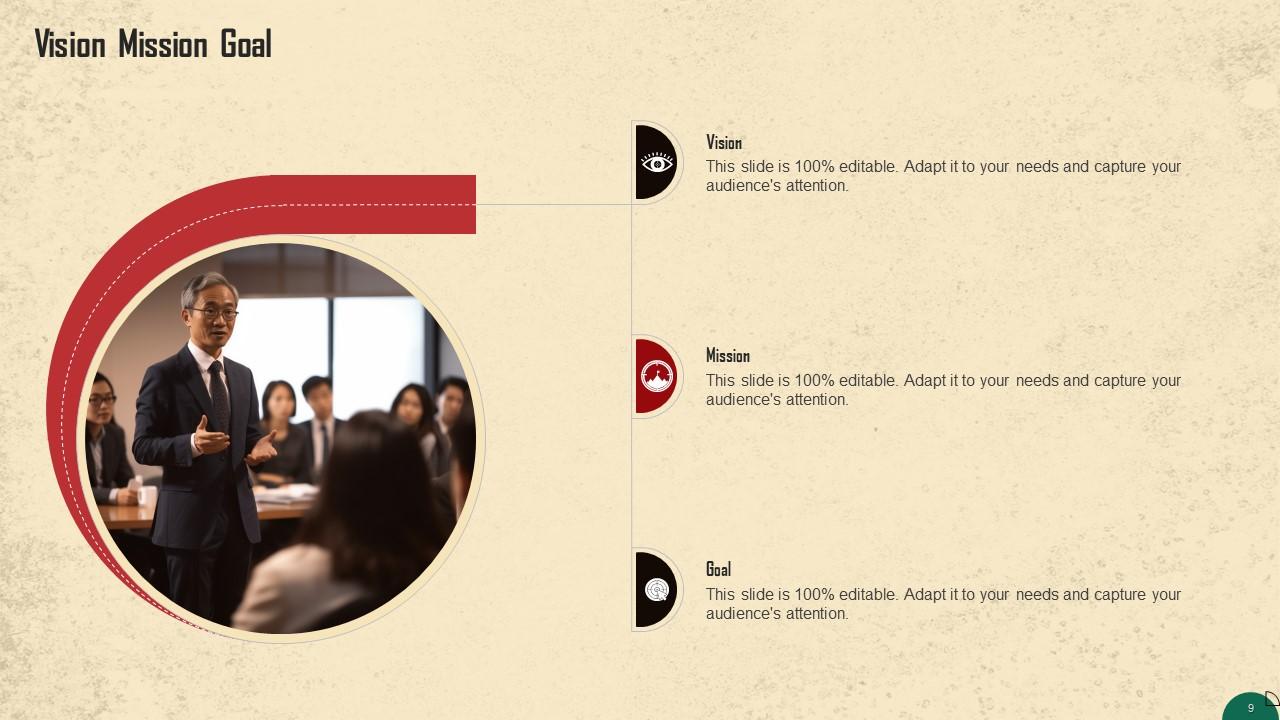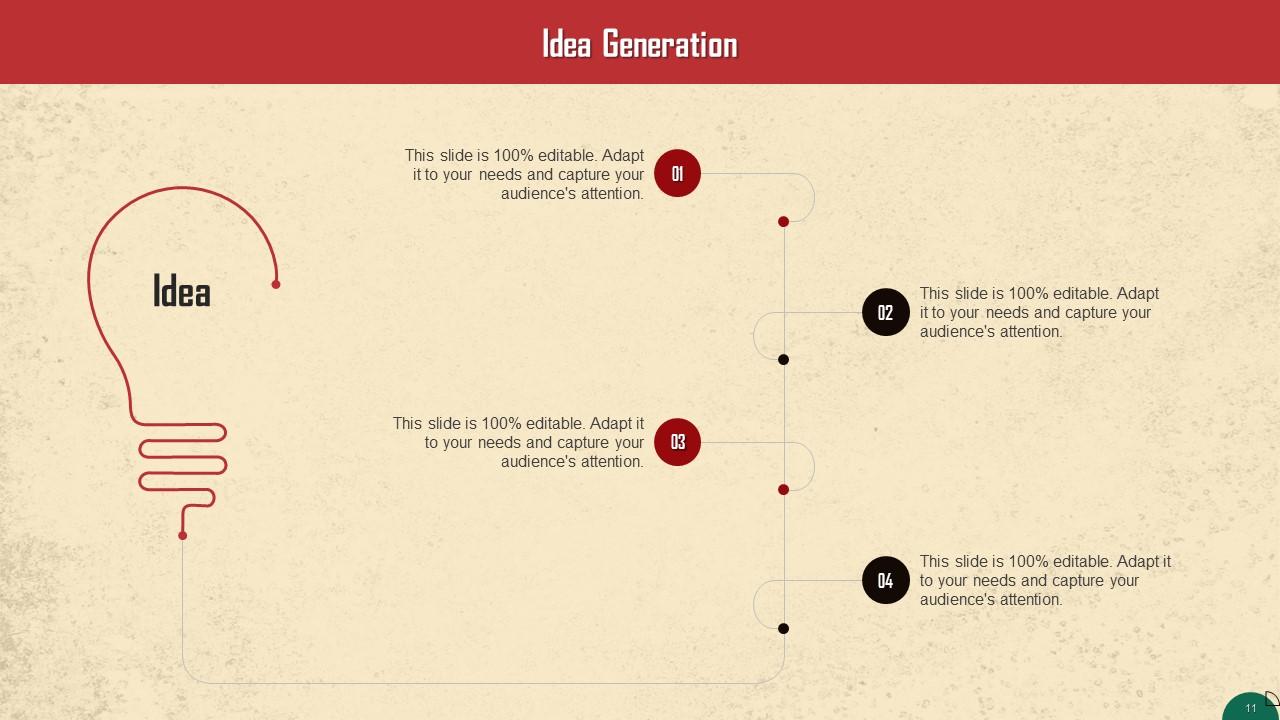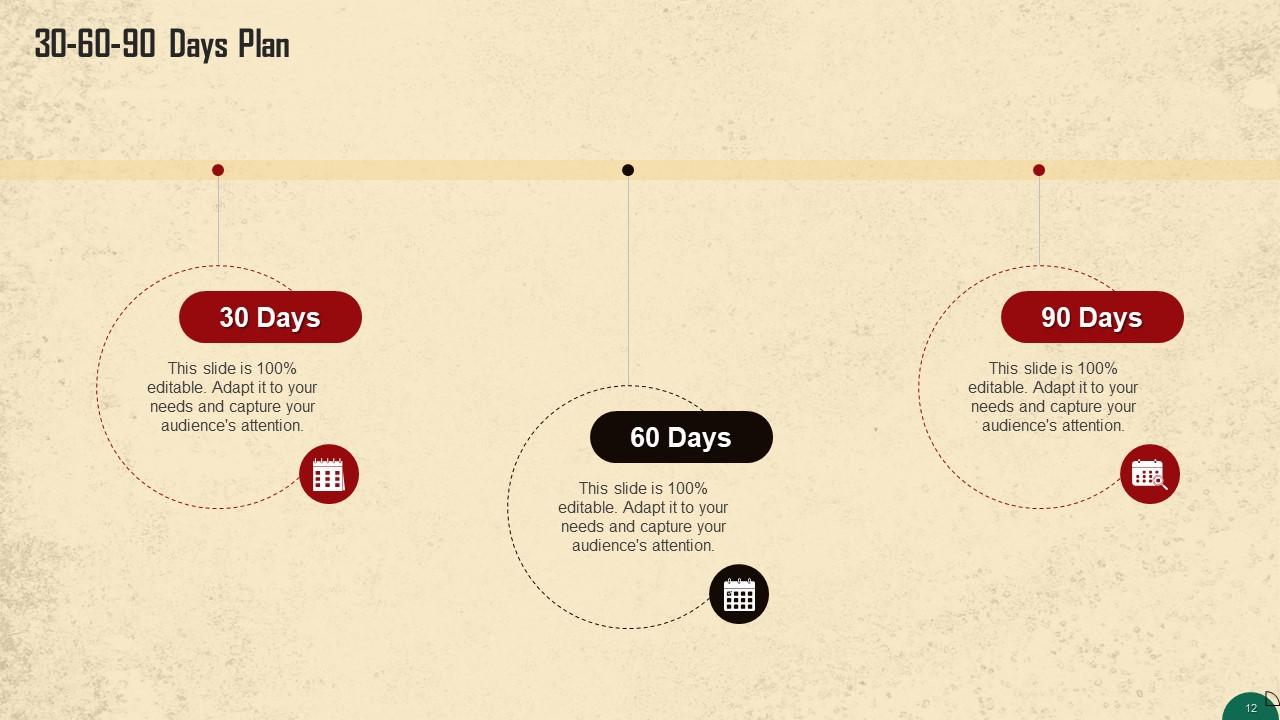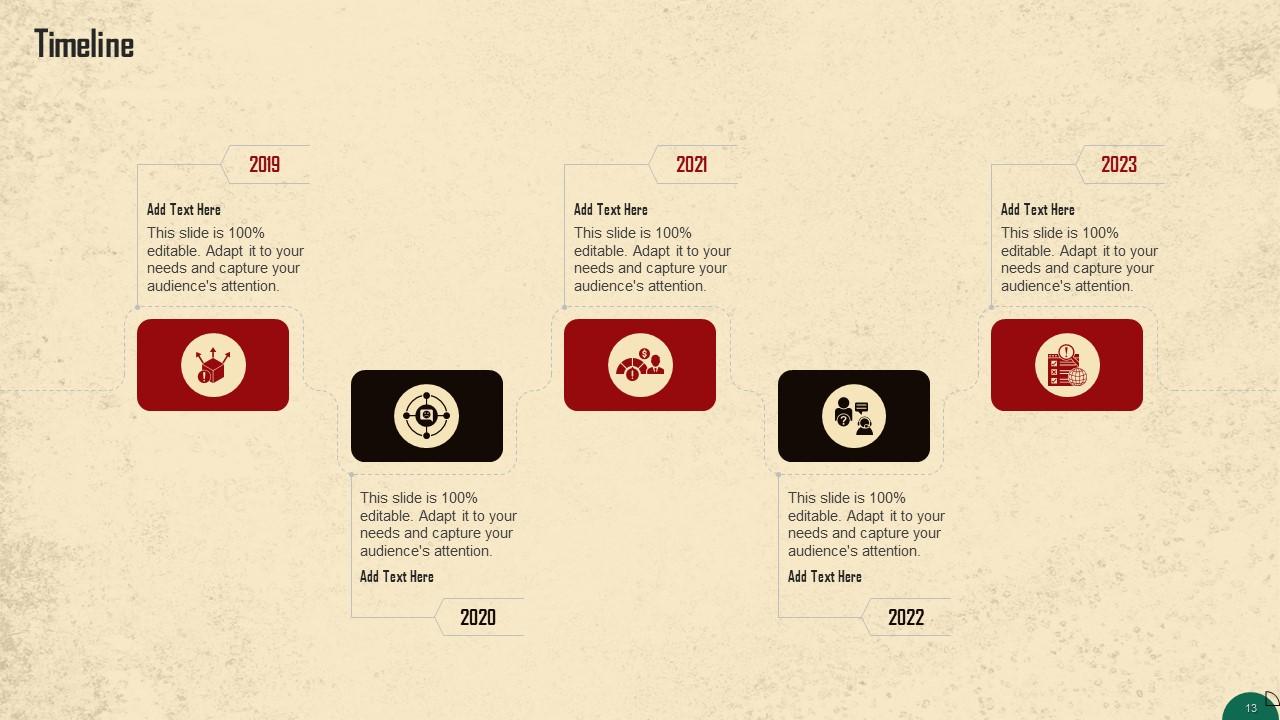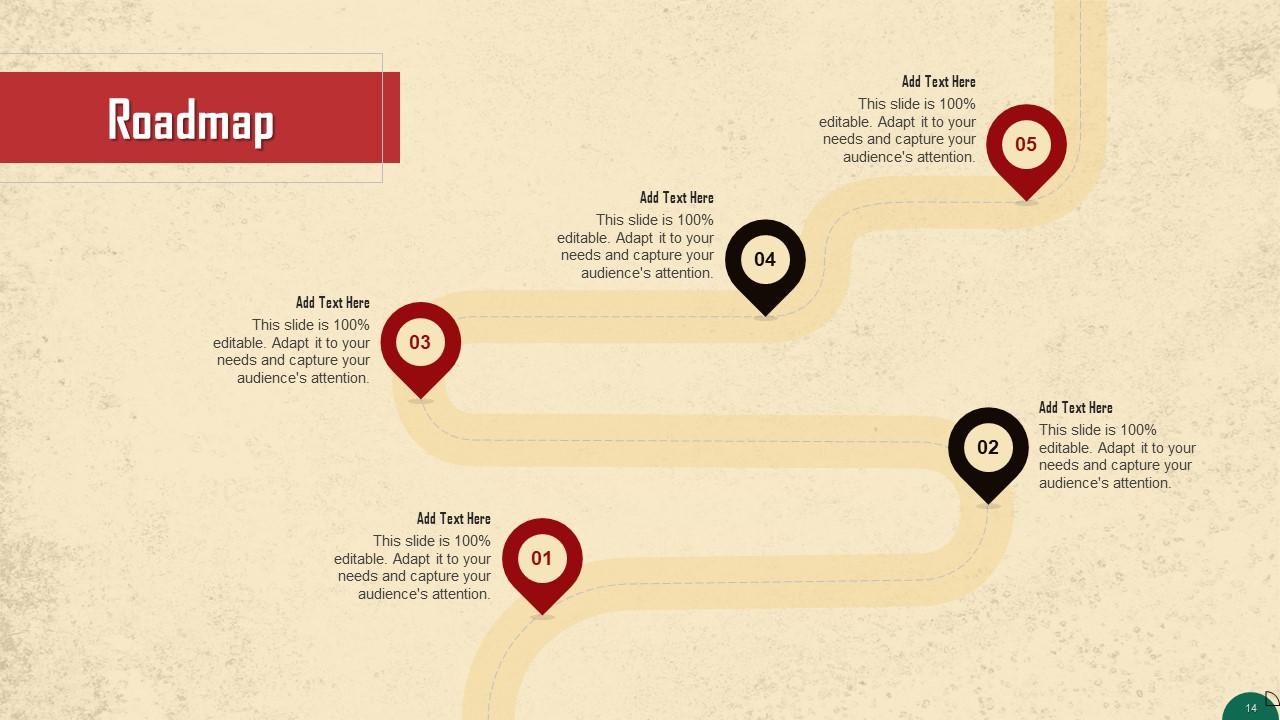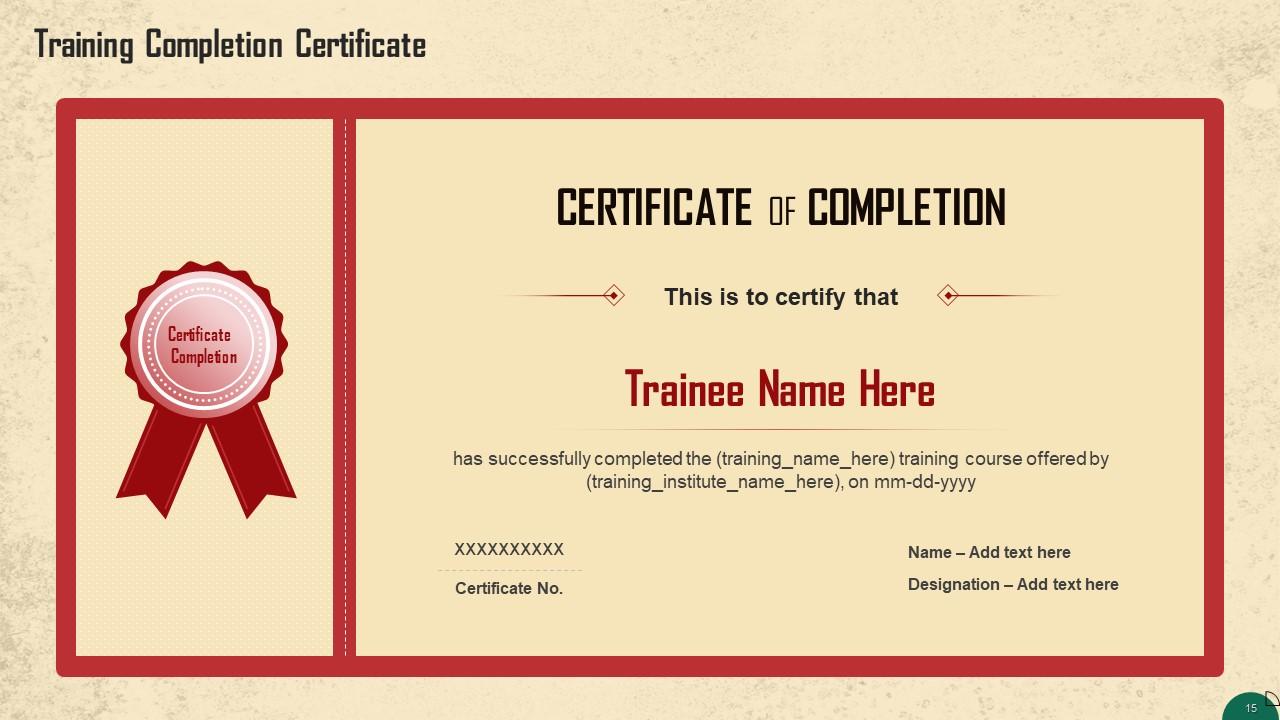Customer Due Diligence In AML Training Ppt
This set of slides covers the significance of CDD Customer Due Diligence in AML Anti Money Laundering. It also describes its need to build new business relationships and detect suspicion of money laundering and unreliable documentation. Further, it covers the steps to perform CDD Identification, verification, nature of the relationship, additional information, documentation, and AML risk scoring.
This set of slides covers the significance of CDD Customer Due Diligence in AML Anti Money Laundering. It also describes it..
- Google Slides is a new FREE Presentation software from Google.
- All our content is 100% compatible with Google Slides.
- Just download our designs, and upload them to Google Slides and they will work automatically.
- Amaze your audience with SlideTeam and Google Slides.
-
Want Changes to This PPT Slide? Check out our Presentation Design Services
- WideScreen Aspect ratio is becoming a very popular format. When you download this product, the downloaded ZIP will contain this product in both standard and widescreen format.
-

- Some older products that we have may only be in standard format, but they can easily be converted to widescreen.
- To do this, please open the SlideTeam product in Powerpoint, and go to
- Design ( On the top bar) -> Page Setup -> and select "On-screen Show (16:9)” in the drop down for "Slides Sized for".
- The slide or theme will change to widescreen, and all graphics will adjust automatically. You can similarly convert our content to any other desired screen aspect ratio.
Compatible With Google Slides

Get This In WideScreen
You must be logged in to download this presentation.
PowerPoint presentation slides
Presenting Customer Due Diligence in AML. Each slide is well crafted and designed by our PowerPoint experts. This PPT presentation is thoroughly researched by the experts, and every slide consists of appropriate content. All slides are customizable. You can add or delete the content as per your need. Not just this, you can also make the required changes in the charts and graphs. Download this professionally designed business presentation, add your content and present it with confidence.
People who downloaded this PowerPoint presentation also viewed the following :
Content of this Powerpoint Presentation
Slide 1
This slide discusses what CDD is based on. CDD is based on three basic regulatory obligations: Customer identification, beneficial ownership, and business relationship.
Instructor’s Notes:
- Customer Identification: Companies are required to identify their clients by gathering personal information and data, such as name, government ID, address, and birth certificate, from a reliable and independent source
- Beneficial Ownership: Companies should try to identify Ultimate Beneficial Ownership (UBO) when a business or third party is working on the behalf of someone else. The idea is to have a record of individual(s) who benefit from the actions of a person or a group of people
- Business Relationship: Companies must identify the nature and purpose of the business relationship they are forming with the client in addition to identifying the customer and the beneficial ownership of the entity
Slide 2
This slide depicts when customer due diligence is required. CDD is required under the following circumstances: New business relationships, occasional transactions, money laundering suspicion, ongoing monitoring, and unreliable documentation.
Instructor’s Notes:
- New Business Relationships: Information collected on new customers will help make sure they are not using a false identity to access services
- Occasional Transactions: CDD procedures are necessary if a transaction exceeds regulatory criteria or involves firms in high-risk foreign nations
- Money Laundering Suspicion: Companies should undertake further CDD checks if a customer is suspected of financing terrorism or money laundering
- Ongoing Monitoring: Companies should carry out CDD throughout the entirety of a business relationship to make sure that transactions match the established risk profiles of their clients
- Unreliable Documentation: Organizations should conduct stricter CDD to resolve discrepancies when customers provide insufficient identification documents
Slide 3
This slide depicts the step-by-step process of conducting customer due diligence. The steps are: Identification, verification, nature of relationship, additional information, documentation, and AML risk scoring.
Instructor’s Notes:
- Identification: The first step is identifying the customer. This can be as basic as identifying their first and last name
- Verification: The next step is verification. This can include verifying your client’s government ID card or passport. The verification of a client’s or beneficial owner’s identity is critically important
- Nature of Relationship: The next thing you should establish as part of your CDD program is the goal and intended nature of the business relation
- Additional Information: The information you gather from the customer may also include their location, their occupation, the types of business transactions they want to do with you, payment methods, their geographical area, and the industry they operate in
- Documentation: It is essential to document all information collected from the customers, preferably on an IT system
- AML Risk Scoring: The last step entails determining the money laundering or terrorist financing risk a customer poses to your organization. You can determine a client’s risk score based on a three-tier scale: low, moderate, high
Slide 4
This slide tells us how to deal with politically exposed persons or PEPs. A PEP is an individual that has been in-charge of a prominent public role or political function.
Instructor’s Notes:
- Identifying PEPs: Numerous databases list people with current or previous political roles or other prominent functions. These databases can be used to identify PEPs. PEPs can also include immediate family members
- Obtaining senior management approval: Since PEPs pose a potentially high risk of money laundering, senior management approval is required to establish or continue a business relationship
- Establishing source of funds: It is essential to determine the source of funds of PEPs to ensure no involvement in money laundering or terrorist financing
- Applying ongoing EDD: Finally, enhanced due diligence and ongoing monitoring are applicable to PEPs
Customer Due Diligence In AML Training Ppt with all 24 slides:
Use our Customer Due Diligence In AML Training Ppt to effectively help you save your valuable time. They are readymade to fit into any presentation structure.
-
Wonderful templates design to use in business meetings.
-
This visual representation is stunning and easy to understand. I like how organized it is and informative it is.


